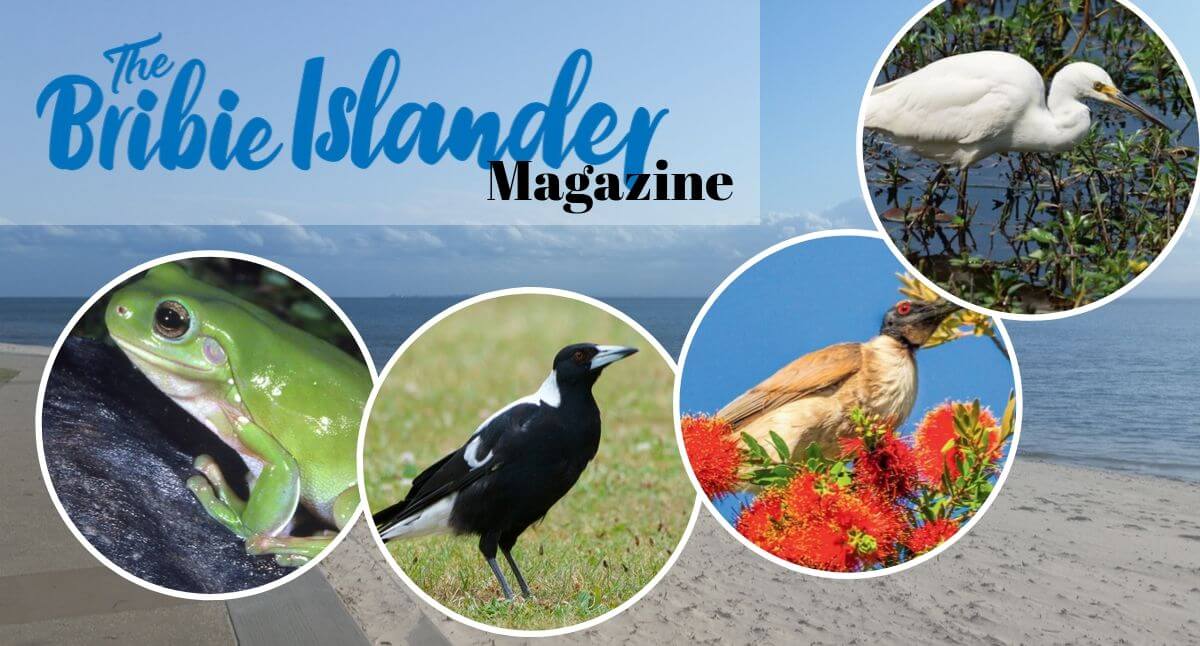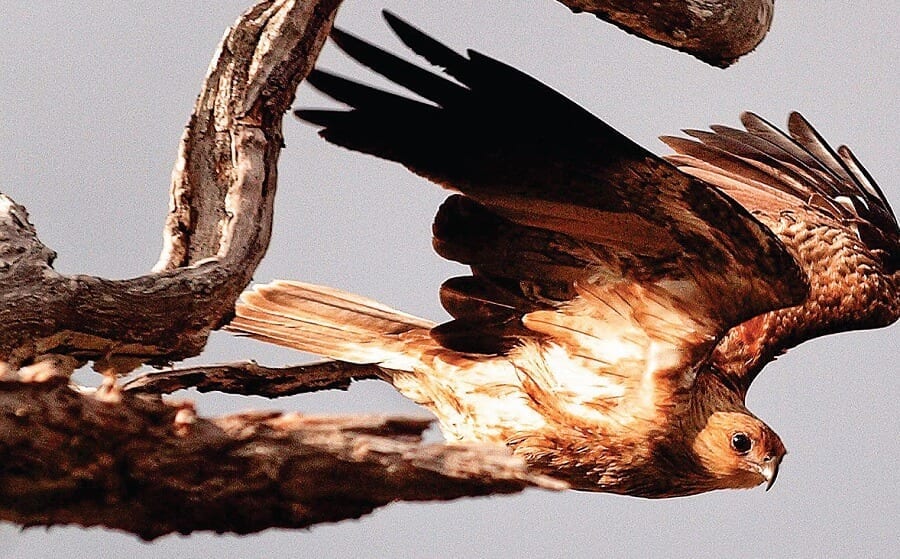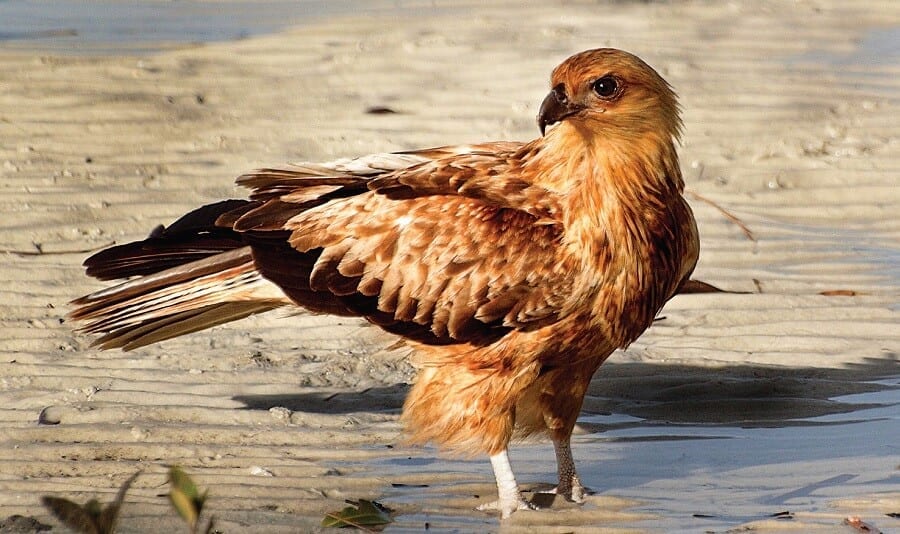Whistling Kite. Australian, Queensland, Moreton Bay, Bribie Island native wildlife. Birds.
Whistling Kites are medium-sized raptors commonly seen and heard while soaring above all areas of Bribie Island. Their whistling calls while in flight or perched are an indication that they are present. Much of their time is spent gliding up and down the Pumicestone Passage in the quest for food.
They are easily identified when in flight by large, white M shaped patches under their wings. At the tip of each wing are six long, feathered fingers which are spread out in flight. They are a sandy brownish colour with rather an untidy appearance and a long pale tail extending well past the wingtips when perched.
Males and females are similar in appearance with the female being a little larger at 60cm, with a wingspan of 120-145 cm and weighing up to 1 kg. They are sometimes mistaken for Little Eagles when in flight as the underwing markings are similar. They have been named for their whistling calls.
Habitat is diverse, with Whistling Kites found over most of Australia. Generally, they like to be near water where much of their food is found. They are more common in the northern areas of Australia and are also found in PNG, the Solomon Islands, and New Caledonia. During drought seasons they become nomadic in search of food. Food is obtained by flying and pouncing on prey and is also found on the ground in the form of carrion.
They are opportunistic hunters and scavengers consuming foods such as fish which are swooped upon from the air, crustaceans, small animals, insects, and carrion. Like Black Kites they often feed at rubbish tips and on roadkill. Also, in the company of Black Kites, they are often present hovering over fires to attack small mammals, reptiles, and insects as they try to escape the flames. I was once surprised to see a Whistling Kite eating a large cormorant at the side of a lagoon.
The cormorant looked like a fresh kill. As well as catching their own prey they will sometimes pirate from other birds and scavenge from fishermen. When swooping and snatching up fish, birds or small mammals they must be careful not to choose something that is too heavy.
It is difficult for them to let go once the talons are fixed. If the prey is too large they could be pulled into the water and drown. Breeding takes place usually from March to November with the predominant breeding months in our area being August and September. They may breed 2 or 3 times a year. Nests are large and cumbersome with lined basin-shaped inners, mostly built in tall trees and near water.
These are often used year after year and added to each season, growing larger each year and sometimes reaching 1.5 m across and 1 m deep. Both parents build nests. Clutches of 2-3 blue-white motley eggs are laid which are incubated mostly by the females for about 40 days. When hatched the chicks are covered with white down and fledge at 7-8 weeks. Adult plumage appears at about 12 months.
Along with Black Kites and Brown Falcons, they are sometimes known as “Firebirds” because of the belief that they pick up burning sticks to drop and start new fires to flush out fresh prey. Whistling Kites appear to have benefited from forest clearing and farming as they prefer to hunt their prey in open areas. Conservation status at this time is secure.
Other Articles
- AUSTRALASIAN FIGBIRD (SPHECOTHERES VIEILLOTI)
- Bribie Wildlife – Red-necked Stint – Calidris ruficollis
- Bribie island Wildlife EASTERN GREAT EGRET – ARDEA ALBA MODESTA



